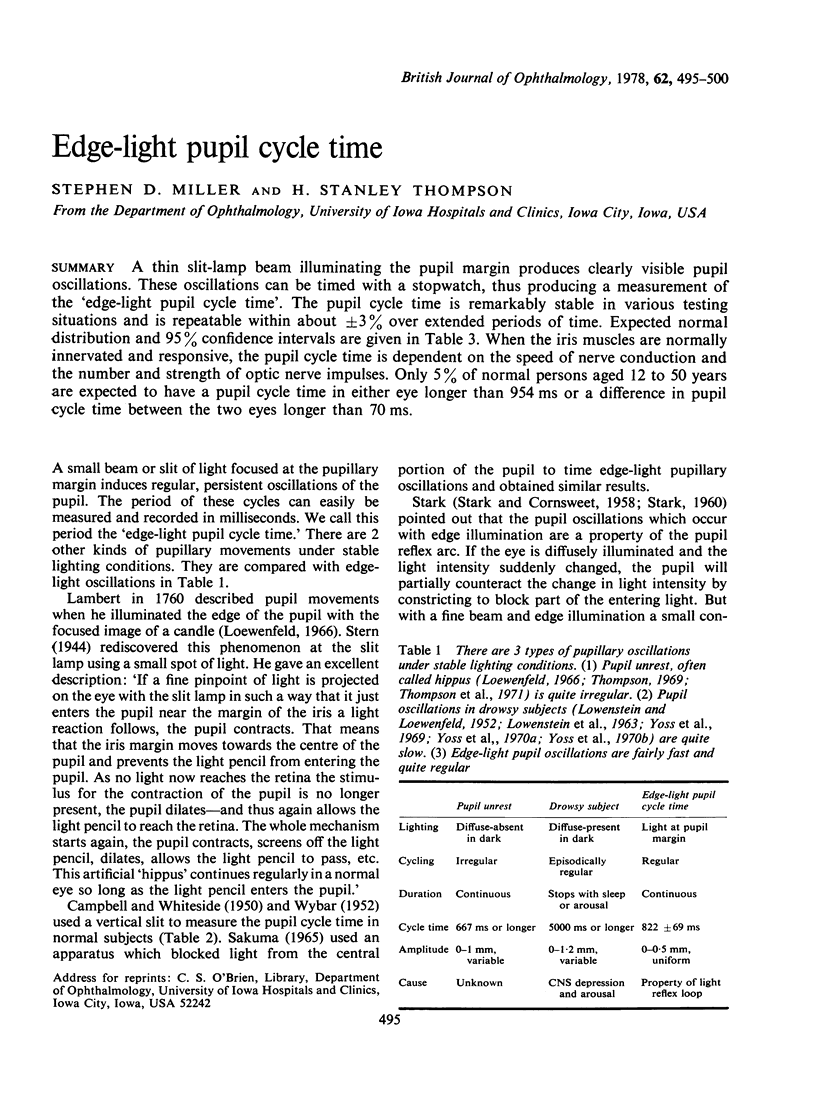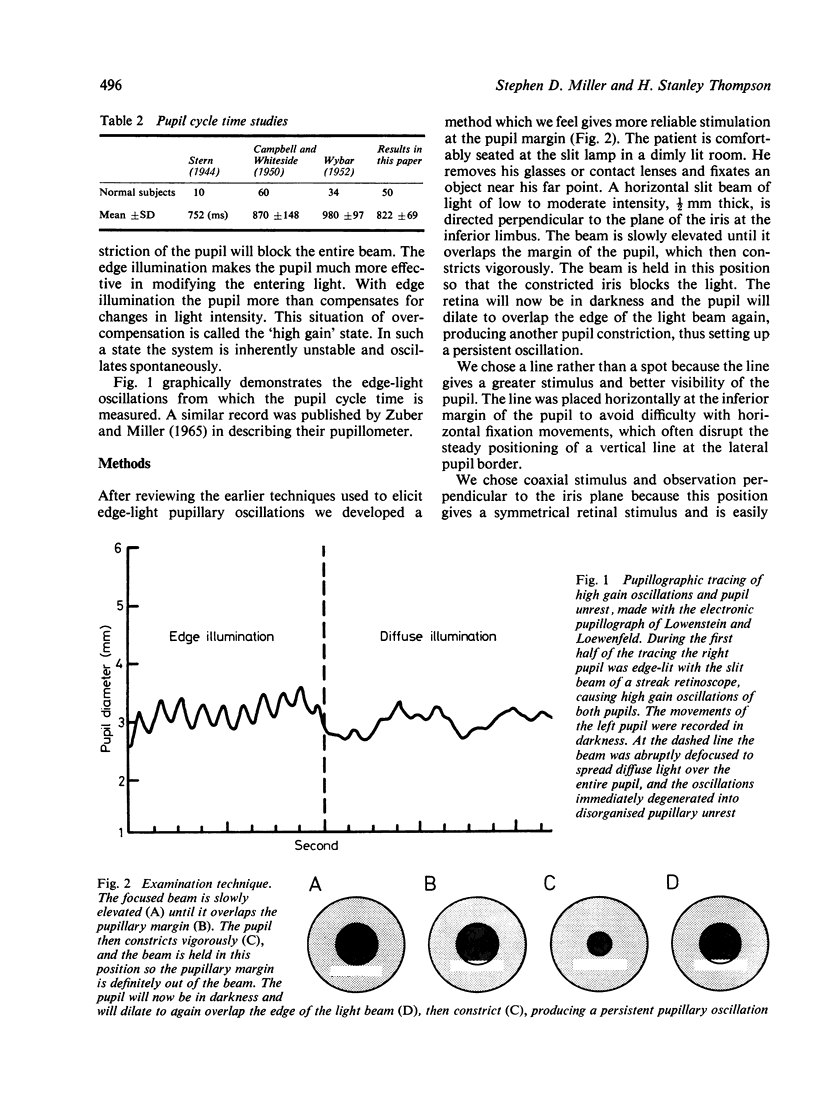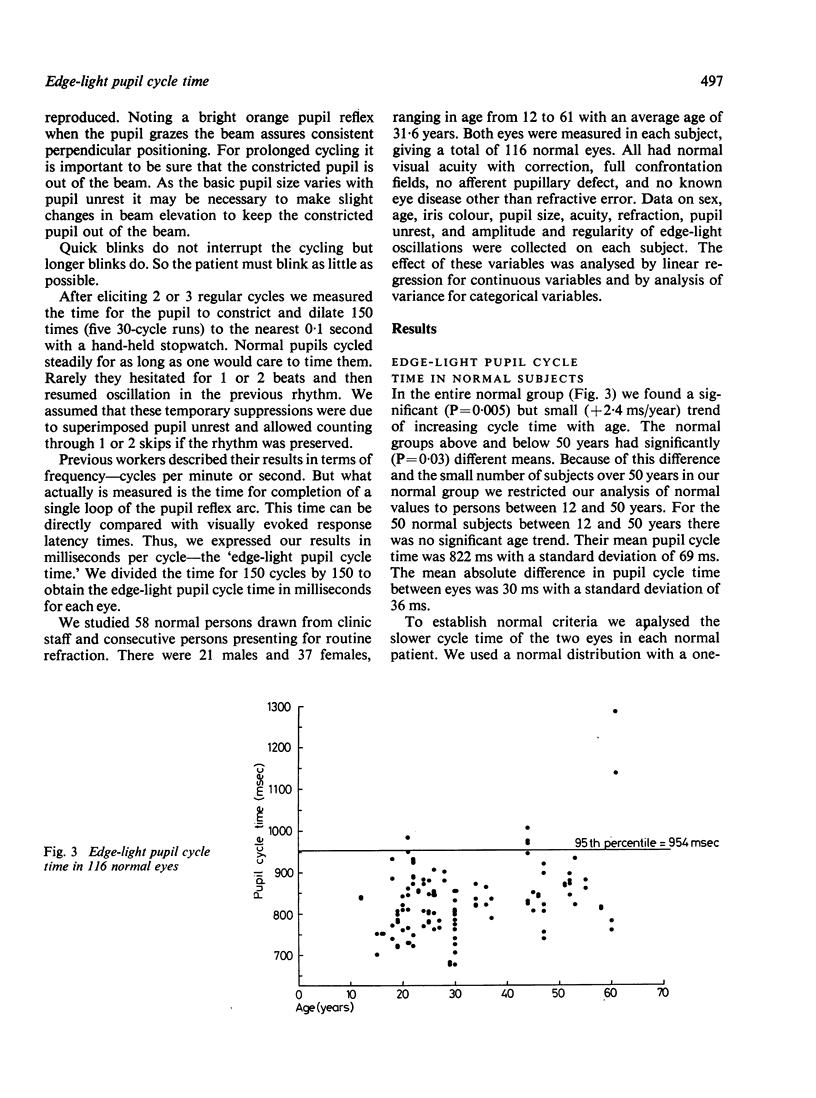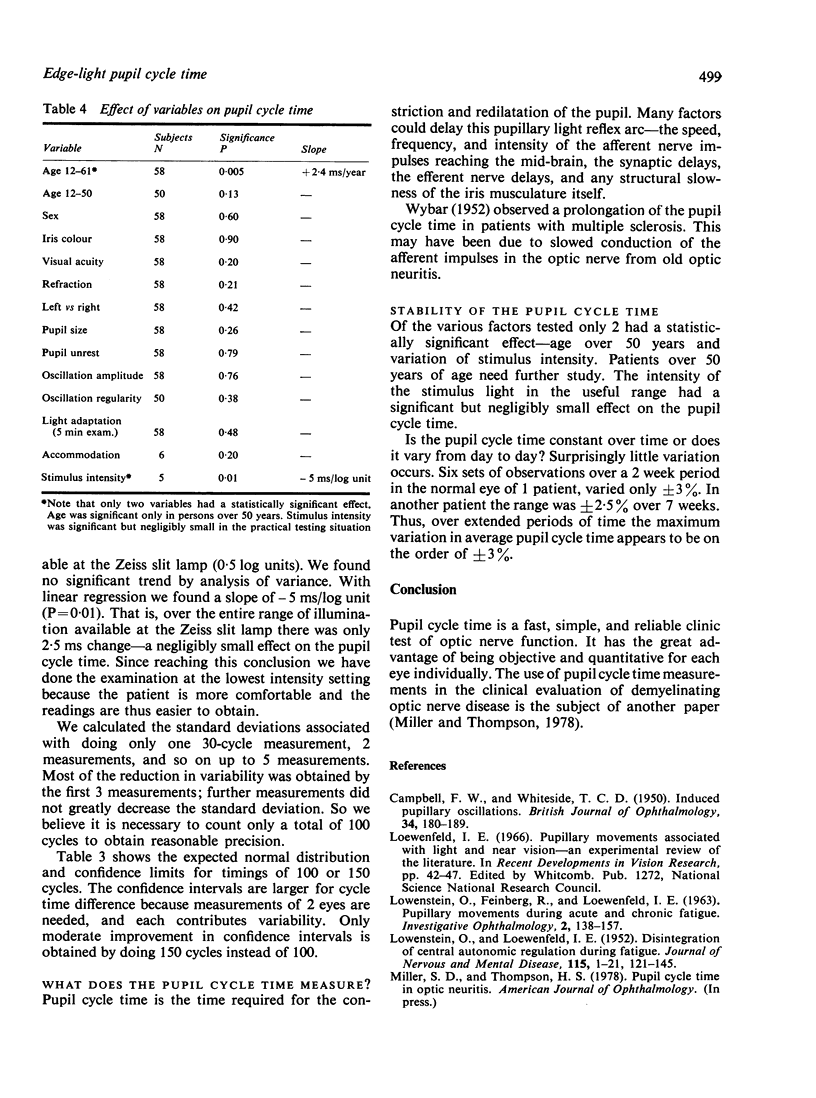Abstract
A thin slit-lamp beam illuminating the pupil margin produces clearly visible pupil oscillations. These oscillations can be timed with a stopwatch, thus producing a measurement of the "edge-light" pupil cycle time'. The pupil cycle time is remarkably stable in various testing situations and is repeatable within about +/- 3% over extended periods of time. Expected normal distribution and 95% confidence intervals are given in Table 3. When the iris muscles are normally innervated and responsive, the pupil cycle time is dependent on the speed of nerve conduction and the number and strength of optic nerve impulses. Only 5% of normal persons aged 12 to 50 years are expected to have a pupil cycle time in either eye longer than 954 ms or a difference in pupil cycle time between the two eyes longer than 70 ms.
Full text
PDF





Selected References
These references are in PubMed. This may not be the complete list of references from this article.
- Campbell F. W., Whiteside T. C. Induced Pupillary Oscillations. Br J Ophthalmol. 1950 Mar;34(3):180–189. doi: 10.1136/bjo.34.3.180. [DOI] [PMC free article] [PubMed] [Google Scholar]
- LOWENSTEIN O., LOEWENFELD I. E. Disintegration of central autonomic regulation during fatigue and its reintegration by psychosensory controlling mechanisms. II. Disintegration; pupillographic studies. J Nerv Ment Dis. 1952 Jan;115(1):1–21. doi: 10.1097/00005053-195201000-00001. [DOI] [PubMed] [Google Scholar]
- STARK L., CORNSWEET T. N. Testing a servoanalytic hypothesis for pupil oscillations. Science. 1958 Mar 14;127(3298):588–588. doi: 10.1126/science.127.3298.588. [DOI] [PubMed] [Google Scholar]
- Stern H. J. A SIMPLE METHOD FOR THE EARLY DIAGNOSIS OF ABNORMALITIES OF THE PUPILLARY REACTION. Br J Ophthalmol. 1944 Jun;28(6):275–276. doi: 10.1136/bjo.28.6.275. [DOI] [PMC free article] [PubMed] [Google Scholar]
- Thompson H. S., Franceschetti A. T., Thompson P. M. Hippus. Semantic and historic considerations of the word. Am J Ophthalmol. 1971 May;71(5):1116–1120. [PubMed] [Google Scholar]
- Thompson H. S. Hippus. Arch Intern Med. 1969 May;123(5):598–598. [PubMed] [Google Scholar]
- WYBAR K. C. The ocular manifestations of disseminated sclerosis. Proc R Soc Med. 1952 May;45(5):315–320. [PMC free article] [PubMed] [Google Scholar]
- Yoss R. E., Moyer N. J., Hollenhorst R. W. Hippus and other spontaneous rhythmic pupillary waves. Am J Ophthalmol. 1970 Dec;70(6):935–941. doi: 10.1016/0002-9394(70)92470-0. [DOI] [PubMed] [Google Scholar]
- Yoss R. E., Moyer N. J., Hollenhorst R. W. Pupil size and spontaneous pupillary waves associated with alertness, drowsiness, and sleep. Neurology. 1970 Jun;20(6):545–554. doi: 10.1212/wnl.20.6.545. [DOI] [PubMed] [Google Scholar]
- Yoss R. E., Moyer N. J., Ogle K. N. The pupillogram and narcolepsy. A method to measure decreased levels of wakefulness. Neurology. 1969 Oct;19(10):921–928. doi: 10.1212/wnl.19.10.921. [DOI] [PubMed] [Google Scholar]
- Zuber B. L., Miller D. A simple, inexpensive electronic pupillometer. Vision Res. 1965 Dec;5(11):695–696. doi: 10.1016/0042-6989(65)90041-6. [DOI] [PubMed] [Google Scholar]


